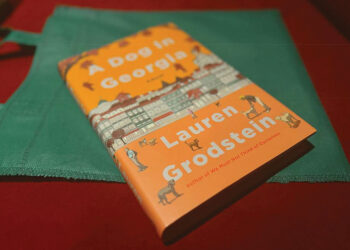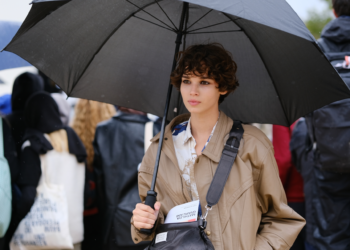In the crooked heart of Tbilisi’s Old Town, beneath the tilted clock tower that ticks like a metaphor, something quietly radical is unfolding onstage. ‘Alfred and Violetta,’ a puppet play first imagined in 1981 by the legendary Georgian artist Rezo Gabriadze, has returned (complete with English subtitles)—not as a museum piece, but as a haunting, deeply personal act of creative inheritance. Spearheaded by Leo Gabriadze, the late master’s son and the current artistic director of the Gabriadze Theater, this revival breathes new life into a work that already defied theatrical conventions. And in doing so, Leo is not only keeping his father’s legacy alive—he is reshaping it.
Rezo Gabriadze was many things: screenwriter, painter, director, sculptor, and above all, a poet of the inanimate. His puppets were never just puppets; they were emissaries of emotion, bearers of tiny heartbreaks, and symbols of cultural endurance. The reimagined ‘Alfred and Violetta,’ completed during the last year of Rezo’s life and premiered after his death in 2021, is a signature moment in the intergenerational relay.
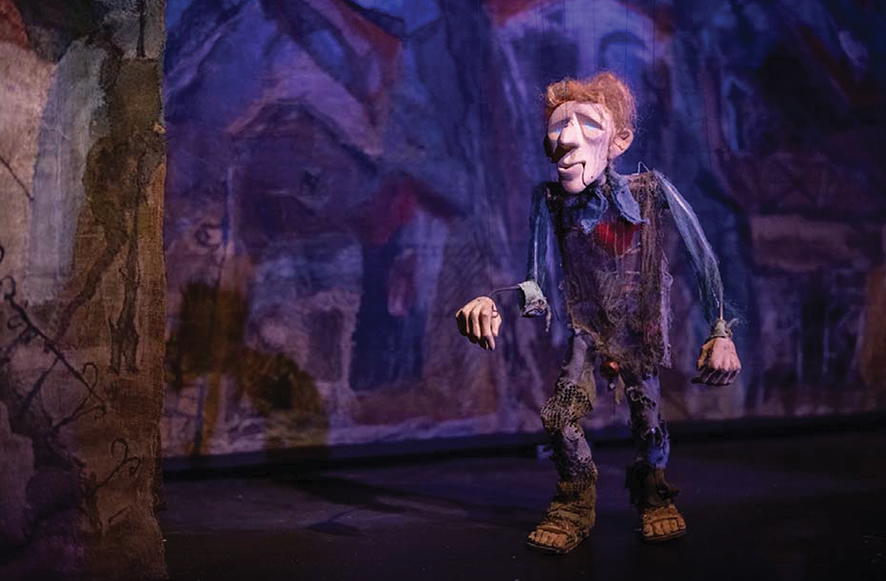
From 19th-Century Paris to 1990s Tbilisi: A Love Story Redrawn in Ruins
The bones of the play remain rooted in La Dame aux Camélias and Verdi’s La Traviata—tales of doomed passion and social cruelty—but Leo and Rezo chose to relocate their narrative to the volatile streets of 1990s Tbilisi. It was a deliberate, even audacious move. Gone are the gilded salons of Paris. In their place: Mtatsminda’s decaying balconies, flickering lights, and the psychological dust of a post-Soviet collapse. The city is not just a backdrop; it becomes a character—a wounded witness to Alfred and Violetta’s fragile affair.
This new setting transforms the love story into something more than a melodrama. It’s a meditation on survival and loss in a country struggling to reassemble its identity. ‘Alfred and Violetta’ becomes, under Leo’s direction, a quiet lament for a generation caught between ideologies and love letters.
By setting the play in 1990s Georgia—a decade of civil unrest, darkness, and hunger—Leo and Rezo don’t just localize a European story, they reframe it as a parable about emotional resilience in the face of systemic collapse. ‘Alfred and Violetta’ becomes an allegory about what love and nostalgia means in a world coming undone. The lovers are not simply tragic figures; they are emblems of the Georgian psyche during one of its most fractured eras.
This temporal shift invites a re-examination of memory. Is the play a tribute? A ghost story? A reckoning? Perhaps all three. In taking up the reins of his father’s final vision, Leo is also asking: how do we inherit a poetic worldview without embalming it?
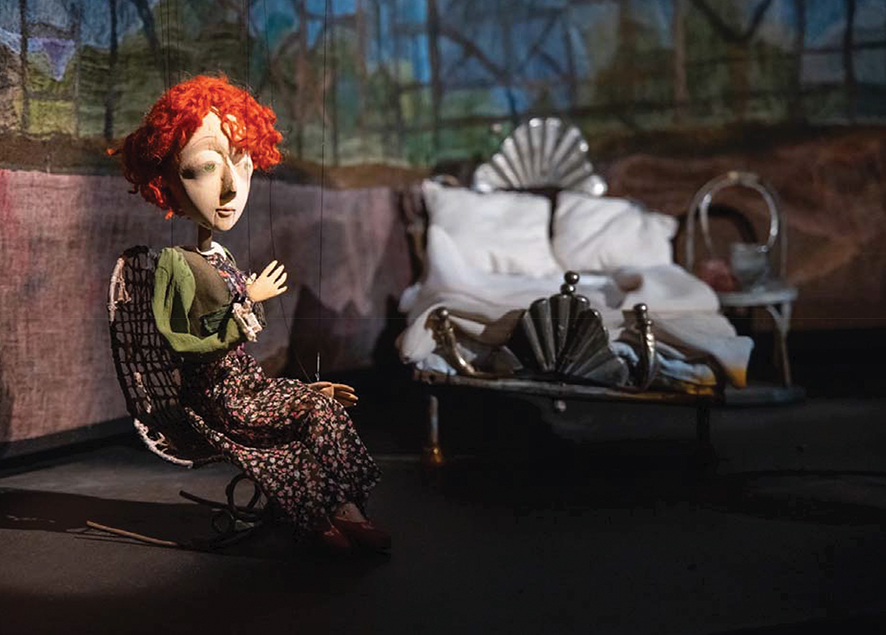
Leo Gabriadze: The Heir with His Own Grammar
Leo is not merely a caretaker of his father’s theater; he is a dramaturge of memory, sculpting the space between homage and reinvention. Where Rezo pioneered a cinematic approach to puppet theater—incorporating close-ups, fragmented narratives, and evocative soundscapes—Leo refines these innovations, adding psychological shading and generational urgency. His version expands the emotional geography, and subtly modernizes the language of the puppets.
This is not a replica. It’s a re-translation of a visual and emotional idiom that belongs to both father and son—but in different dialects. Leo, who has a background in film direction and visual storytelling, integrates a contemporary sensibility that aligns with Georgia’s shifting cultural rhythms. The revival does not simply memorialize the past; it asks what the past means now.
Silhouettes of Longing: Puppetry as Emotional Language
What makes this production so devastatingly effective is its fidelity to the craft of puppetry as a vehicle for raw feeling. Gabriadze’s puppets don’t speak, even when they speak. Their eloquence comes from movement, gesture, and silence—an echo of nonverbal performance traditions across the world, from Japanese Bunraku to Czech marionette theater. The puppeteers—listed in this version as both “animators” and “puppeteers”—are invisible but essential, choreographing sorrow with minimalist precision.
One unforgettable image: a single autumn leaf slowly drifting down onto Alfred. It carries the weight of a season lost. In that brief moment, the leaf becomes Violetta’s last message — a trace of life, of something once vibrant now gone. Leo lets it fall long and without spotlight. He trusts the audience to feel the stillness. He choreographs time itself, not gestures. And in that falling leaf, grief becomes tangible.
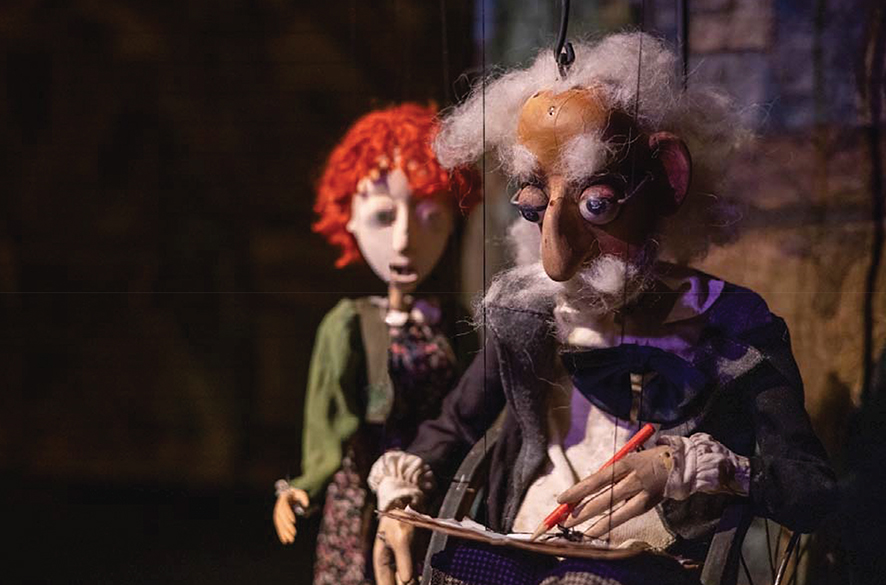
Music, Memory, and the Ghosts of Georgia
The musical score, composed by Leo himself, adds another layer of intergenerational dialogue. It’s a score that likely straddles traditions—drawing from Georgian tonalities while gesturing toward operatic intensity. In Leo’s hands, music does not underscore the narrative so much as punctuate its emotional topography.
The visual world, designed by Rezo, remains striking in its surreal minimalism. The now-iconic wry house and wobbly clock tower onstage mirror the real ones just outside the theater’s doors. They seem whimsical at first glance, but under Leo’s lens, they become tremulous symbols: instability, tenderness, and the uneasy passage of time.
Critical acclaim for ‘Alfred and Violetta’ has been resounding, with many hailing it as a triumph of emotional minimalism and visual ingenuity. But what truly distinguishes this version is its intergenerational courage. It’s easy to replicate a master; it’s far harder to respond to him with your own voice—especially when that master is your father. Leo Gabriadze’s staging is therefore not just a theatrical event, it is a blueprint for cultural continuity. It suggests that the small stage on Shavteli Street can still contain epic questions: How do we mourn? How do we remember? How do we continue?
In this love story between puppets, a city, and a father-son duet, the answer is whispered through silence, string, and shadow.
By Ivan Nechaev



